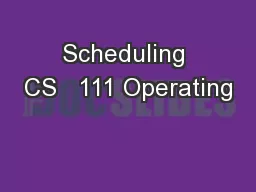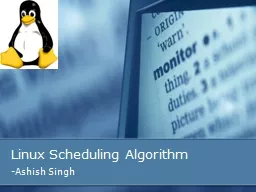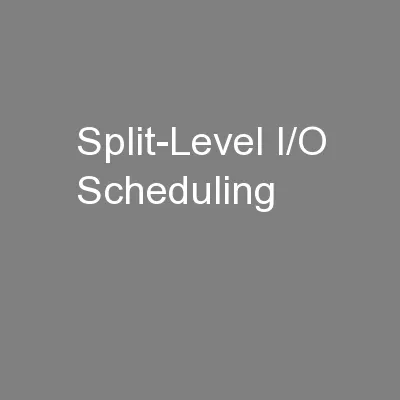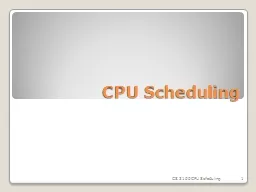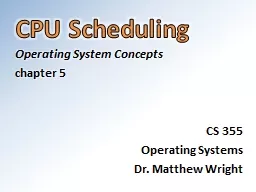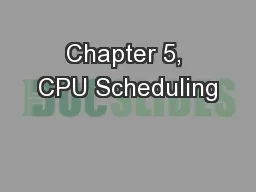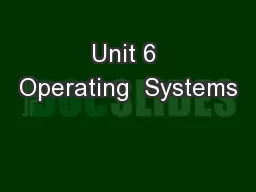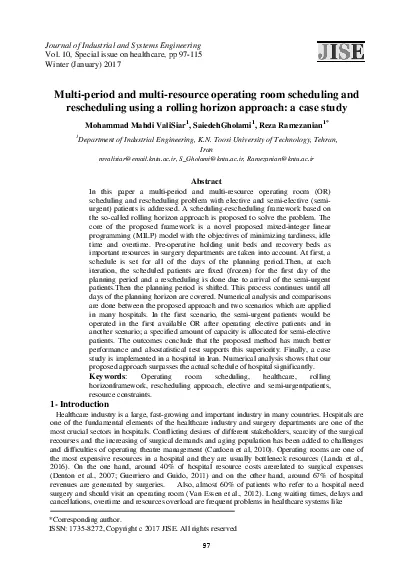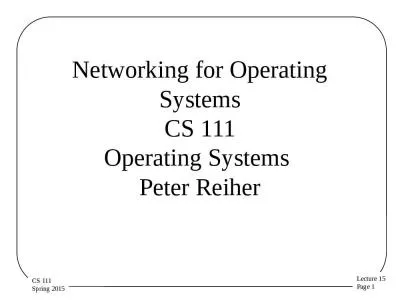PPT-Scheduling CS 111 Operating
Author : olivia-moreira | Published Date : 2018-03-20
Systems Peter Reiher Outline What is scheduling What are our scheduling goals What resources should we schedule Example scheduling algorithms and their implications
Presentation Embed Code
Download Presentation
Download Presentation The PPT/PDF document "Scheduling CS 111 Operating" is the property of its rightful owner. Permission is granted to download and print the materials on this website for personal, non-commercial use only, and to display it on your personal computer provided you do not modify the materials and that you retain all copyright notices contained in the materials. By downloading content from our website, you accept the terms of this agreement.
Scheduling CS 111 Operating: Transcript
Download Rules Of Document
"Scheduling CS 111 Operating"The content belongs to its owner. You may download and print it for personal use, without modification, and keep all copyright notices. By downloading, you agree to these terms.
Related Documents

